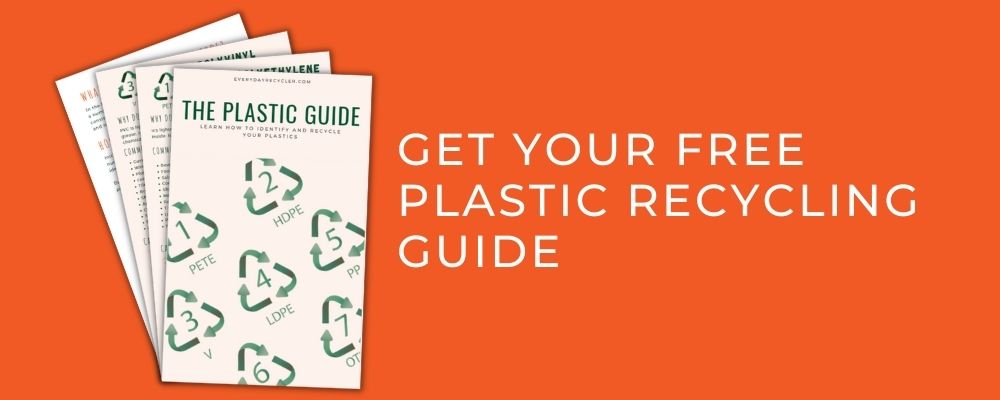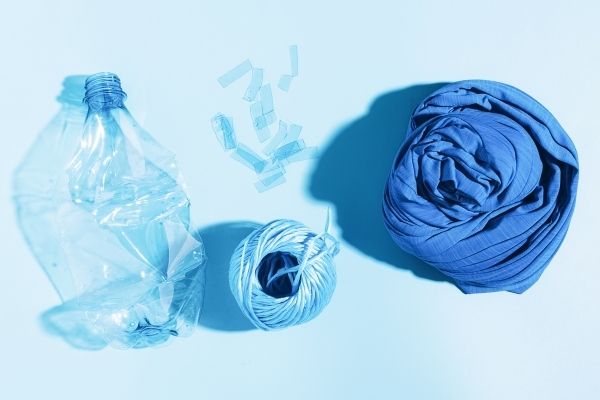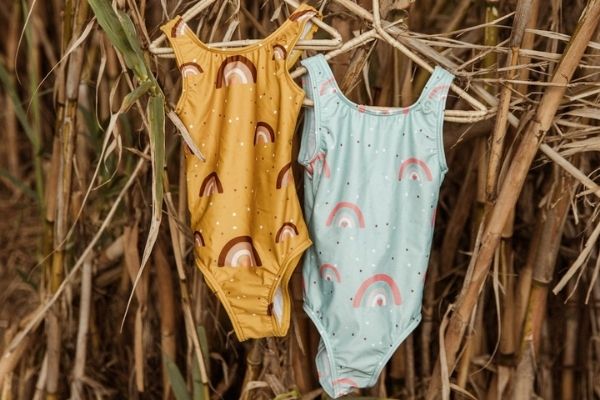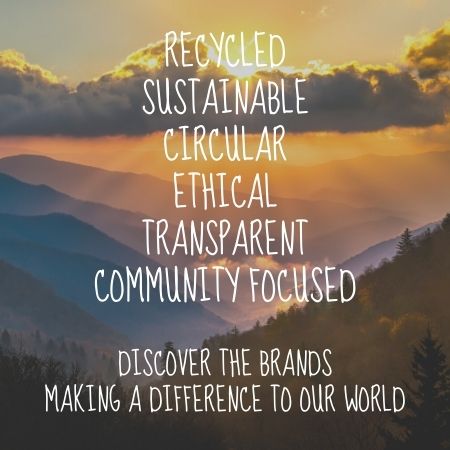Clothing and the fabrics used to make clothes are a central part of the everyday life of humans. Beyond the practicalities of covering our bodies and keeping us warm, clothing also enables us to express our personality and culture. The problem is that we produce far too much of it, and we use many resources to do it.
At the same time, we create an enormous amount of waste going about our day-to-day lives. According to the EPA, the average American produces approx. 4.9 pounds of trash every day, and this is increasing. It’s a similar story in other countries too.
What if we could produce clothes using these waste products? Sure it’s not going to solve our issues with fast fashion and having too many clothes, but it keeps these waste materials, often plastics, in circulation, saving them from landfills and reducing virgin resources. Not a perfect circular model but a start at least. The more material we can repurpose and keep in use, the better for us and the earth.
Would you be surprised to know many companies are leading the way in using recycled fabrics and materials in clothing?
Many recycled fabrics are made from our trash. There are fabrics made using discarded water bottles, fishing nets, and even food waste. Not to mention the reprocessing of cotton and other natural fibers.
Read on to learn more about recycled fabrics and their role in a more sustainable fashion industry.

Quick Navigation
What Are Recycled Fabrics?
Recycled fabric is a fabric that has been made from waste material that is reprocessed into new fibers and then spun into new yarns and fabrics. There are several different types of recycled fabrics, and they are made in quite different ways.
The two main types are:
- Textiles made from recycled fabric or clothing
- Fibers and fabric created from other waste materials like plastic water bottles or food waste.
Recycled Fabric From Clothing
Clothes are complicated to recycle. The first stage is to exclude any clothing that can be reused. These clothes are often exported to third-world countries.
To properly recycle clothing, different fiber types need to be separated into different types of materials. Textiles must first be sorted by usage (clothing vs. linens), then by fabric type (synthetic vs. natural), and then by color. This can be very, very labor-intensive and also very expensive.
Once separated, the textiles are then mechanically shredded, resulting in a fiber that can then be made into new fabrics. The yarn is cleaned and sometimes mixed with other fibers, and then it is respun ready to be woven or knitted into a new item.
A lot of textiles that are recycled in this manner are, in fact, downcycled; they are used as rags before they even get processed. About 35% of donated clothes in the European Union are turned into industrial rags. The fibers are also used for stuffing furniture, insulation, or carpets.
If the textiles are polyester-based, they may be shredded, granulated, and made into polyester chips to be used to create new fibers.
Recycled Fabric Made From Other Waste Materials
Recycled fabrics can also be made from other waste materials. These materials are put through various different processes that may include collecting, sorting, washing, and drying, followed by processing and manufacturing. The fabrics can then be used to create new clothing or other textile products.
One of the most common is to use recycled plastic bottles. Repreve is a manufacturer of recycled polyester made from discarded plastic bottles based in the U.S.A. Many brands use this fabric in place of virgin polyester in their products.
Another great example is a company called Aquifil, which makes a fabric called Econyl from recycled Nylon. They collect discarded fishing nets and old carpets to create new nylon fibers. Econyl is also very popular, especially amongst swimwear brands.
Did you know that innovative fabric is also being designed from food waste? There are a variety of different ways that plant waste can be transformed into sustainable fabric depending on the type of plant material.Different parts of the plant can be used for creating a recycled fabric such as the stalk, seeds, leaves, or peel. Learn more in 6 Sustainable Fabrics Made From Food Waste.
What are the Environmental Benefits of Recycled Fabrics?
Recycled fabrics play an important role in helping the fashion industry shift to a more circular model.
Choosing recycled fabrics over virgin fabrics helps keep materials in circulation as long as possible, even if those materials did not start as fabric. It has also been shown that making fabrics from recycled materials uses less energy than using virgin materials.
The benefits:
- Less Energy required
- Reduce the need for virgin materials
- Supports the Circular Economy
- Reduces Landfill
Will Recycled Fabrics Fix Fast Fashion?
Although there are great benefits to using recycled fabrics, they are not a solution to the overconsumption associated with fast fashion. The best thing we can all do to stifle the excesses of fast fashion is to stop buying more clothes. Read Reduce Reuse Recycle, Ways to get you thinking. To learn more.
If you need to buy new clothes, buying clothing made from recycled materials is a great way to reduce your impact.
Often the companies who are embracing recycled fabrics are also socially and environmentally more responsible. Many of them are working hard to make sure they address issues like poor work conditions, unfair wages, and the excessive use of water and chemicals.
A great example of this is the swimwear brand Vitamin A.
Vitamin A was one of the pioneers of recycled swimwear fabrics. There were no suppliers when they started, so they spent 3 years working with top mills across Italy, Canada, and California to develop their own recycled fabric.
In addition to using recycled materials, Vitamin A uses waterless digital printing technology, takes great care of the people making their products, and donates a percentage of their profits to environmental organizations like 1% For the Planet, Oceana, Plastic Oceans, and Surfrider Foundation.
Find out more about Vitamin A here.
Recycled Polyester
It is important to note that when we refer to recycled polyester, we are talking about polyester made from recycled PET. Polyester, once made into fabric, can be difficult to recycle.
Polyester is the common name for polyethylene terephthalate (PET or PETE), also referred to as Plastic Number 1. Polyester fiber is used in various industries, from clothing, food, and drink packaging to manufacturing. Polyester makes up 18% of the world’s produced plastics and is the most widely used and produced plastic globally.
Polyester is used to make clothing, shoes, home furnishing, bags and luggage, car accessories and ropes, and fishing nets.
- durable, quick-drying, and highly resistant to environmental factors, such as water and wind
- extremely stain resistant – they can only be colored using special disperse dyes
- good at insulating
- strong – tear and wrinkle resistant
- reliable and lightweight – retains its shape well and is resistant to shrinking and stretching
Polyester is also sensitive to temperature, flammable, often regarded as non-breathable, and is known to cause skin irritation commonly.
Not only that – but the majority of synthetic polyester is not biodegradable and uses tons of non-renewable resources to produce.
This means it is having a long-lasting effect on our environment beyond its intended use. Not cool.
We can recycle a variety of virgin polyester from different sources. However, the most common source for the textiles industry is recycled PET bottles. Although it’s important to note that not all polyester is suitable for recycling, this is especially difficult when the fibers or materials are blended with others.
Recycled polyester fiber is a smart, sustainable fabric option for eco-conscious consumers. The fabric quality is almost identical; however, the price the planet pays is much lower.
Learn more about Polyester here.
Fashion Brands Using Recycled Polyester
Recycled Nylon
Nylon, a strong and lightweight fiber, is one of the most commonly used artificial fibers. More than 8 billion pounds are produced annually in the U.S. alone. Nylon is found in many common items like ropes, luggage, backpacks, reusable shopping bags, and clothing like swimwear, activewear, and outdoor gear.
Nylon is a form of plastic made from crude oil. It can be melted and molded into products or drawn into fibers to make fabrics or rope. Nylon fabric is popular because it does not absorb water, dries quickly, and holds its shape. This is why it is used so often in swimwear. It’s also used in hosiery, gowns, and lingerie. Nylon is strong, elastic, and easy to wash. On the negative side, it is poor at wicking moisture and can burn quickly if exposed to an open flame.
It also takes quite a lot of energy to produce Nylon. Large amounts of energy are required to extract and process crude oil to manufacture nylon and nylon products. Using recycled nylon is a great way to reduce this impact and reuse materials already in circulation.
Currently, recycling nylon is tough, and there are very few places that can do it. An Italian company called Aquafil has created a process where they recycle old fishing nets, carpets, and other items into new nylon in a completely circular process. They make Econyl fabric and yarn that is used in many popular brands. You can learn more about Econyl here.
Many swimwear brands use Econyl recycled nylon fabric in their collections. Check out our recycled swimwear series for some inspiration.
Learn more about Recycled Nylon here.
Fashion Brands Using Recycled Nylon
Recycled Cotton
Recycled cotton is made from cotton that would otherwise have been wasted, like cotton scraps, factory offcuts, or deadstock. This is referred to as pre-consumer waste.
Recycled cotton yarn has much less environmental impact than conventional cotton yarn. Research shows that using 1000kg of recycled cotton yarn can save 0.5 hectares of land, C02 emissions are reduced by 6600 kg, and 2783 cubic meters of irrigation water are saved.¹ In addition, recycled cotton is biodegradable, ensuring that we do not have to worry about a prolonged effect on the environment, such as with recycled polyester.
Recycled cotton is much like virgin cotton in that it is soft and lightweight, breathable, durable, and easy to wash. Plus, it is biodegradable and recyclable, giving it a lower environmental impact than synthetic yarn. As with cotton, it has some longevity issues due to it being a natural fabric – it isn’t tear or abrasive resistant, but it doesn’t hold elasticity. It can also be quite expensive.
There are an array of uses for recycled cotton, from home textiles and clothing, to industrial cleaning cloths and even paper.
Learn More about Recycled Cotton here.
Fashion Brands Using Recycled Cotton
Where Else Can You Find Recycled Products
When you buy recycled products, you help build a valuable market for our waste. You are also supporting those companies that are choosing to make a difference.
Take a look in our BRAND DIRECTORY for many more brands using recycled content in their products.
Other Ways to Reduce Your Impact
Here are some great suggestions on how to reduce your impact when it comes to your wardrobe.
- Shop your Wardrobe: Do your best to repurpose the items in your current wardrobe instead of buying new ones.
- Support Sustainable Clothing Brands: Rather than buying more low-quality clothes for less, opt for well-made, high-quality, sustainable clothes that will last you several years to come.
- Shop Vintage: Vintage clothing has become a huge trend lately. By buying pre-owned vintage clothing, you will not only be celebrating past fashions but also keep up with the cyclic trends. Another great benefit of vintage clothing is the price! Some Instagram vintage shops are leading the way so that you can sort out some great vintage treasures from them. You might even find a brick-and-mortar vintage store in your area. Don’t compromise on principles, and don’t compromise on style!
- Follow the 30-Wears rule: A term coined by Livia Firth, founder of Eco-Age, the 30-Wears rule can help you make better purchase decisions. Before you buy an article of clothing, ask yourself, “Will I wear this at least thirty times?” If the answer is Yes, go ahead and buy it. If the answer is No, don’t buy it! Buying clothes that you will wear only once or twice is a waste of money, and the clothes will most probably end up in the trash.
- Recycle your clothes: There are many options for recycling the clothes you no longer need. You can find out more in our article on Clothes Recycling: How to Recycle Clothes Sustainably.
- Support eco-conscious, sustainable, and ethical brands
There are so many amazing brands that are now choosing to become more sustainable who need our support financially to grow, increase their efforts, influence other brands, and impact the world of fashion.
When buying from a brand, consider what materials they use in their products. If they are using recycled fabrics, that is a great step forward.
Learn more about recycled fabrics in our series:
- Yun, Huang, Libin and Zhang, 2020, Could the recycled yarns substitute for the virgin cotton yarns: a comparative LCA
- National Overview: Facts and Figures on Materials, Wastes and Recycling
- Ellen Macarthur Foundation.org, 2017, A-New-Textiles-Economy















